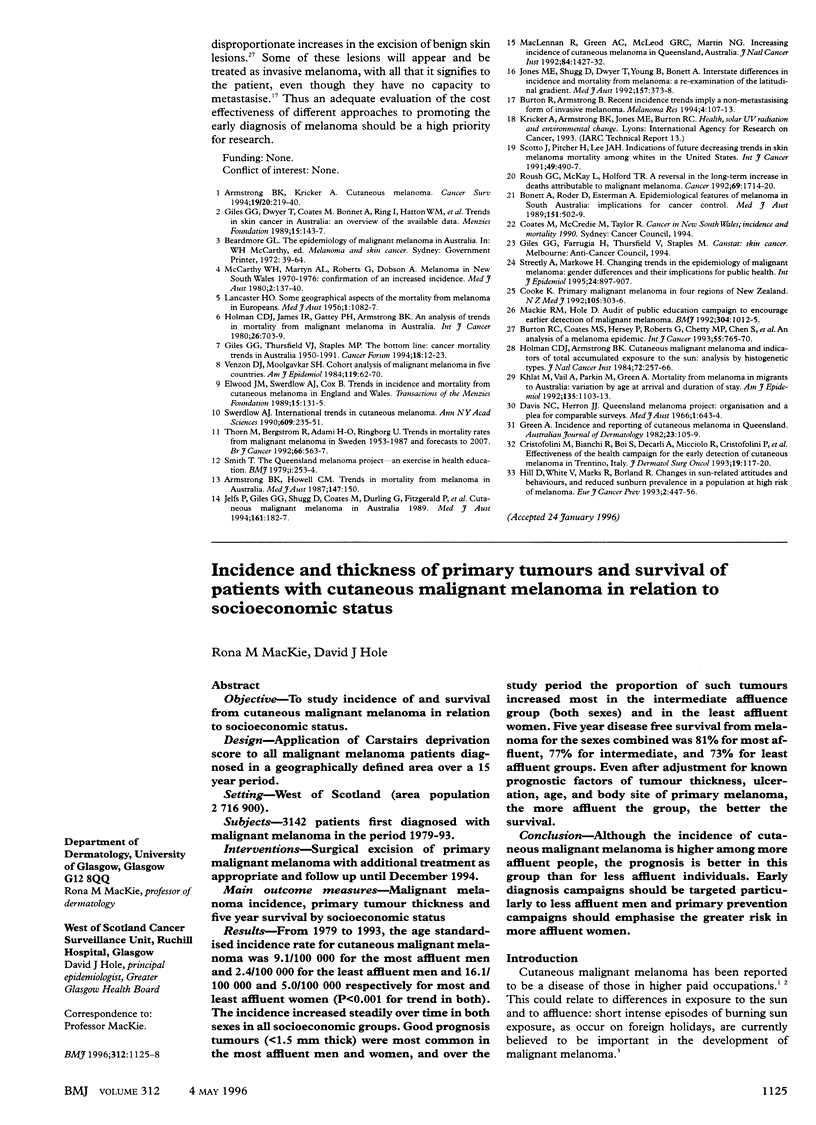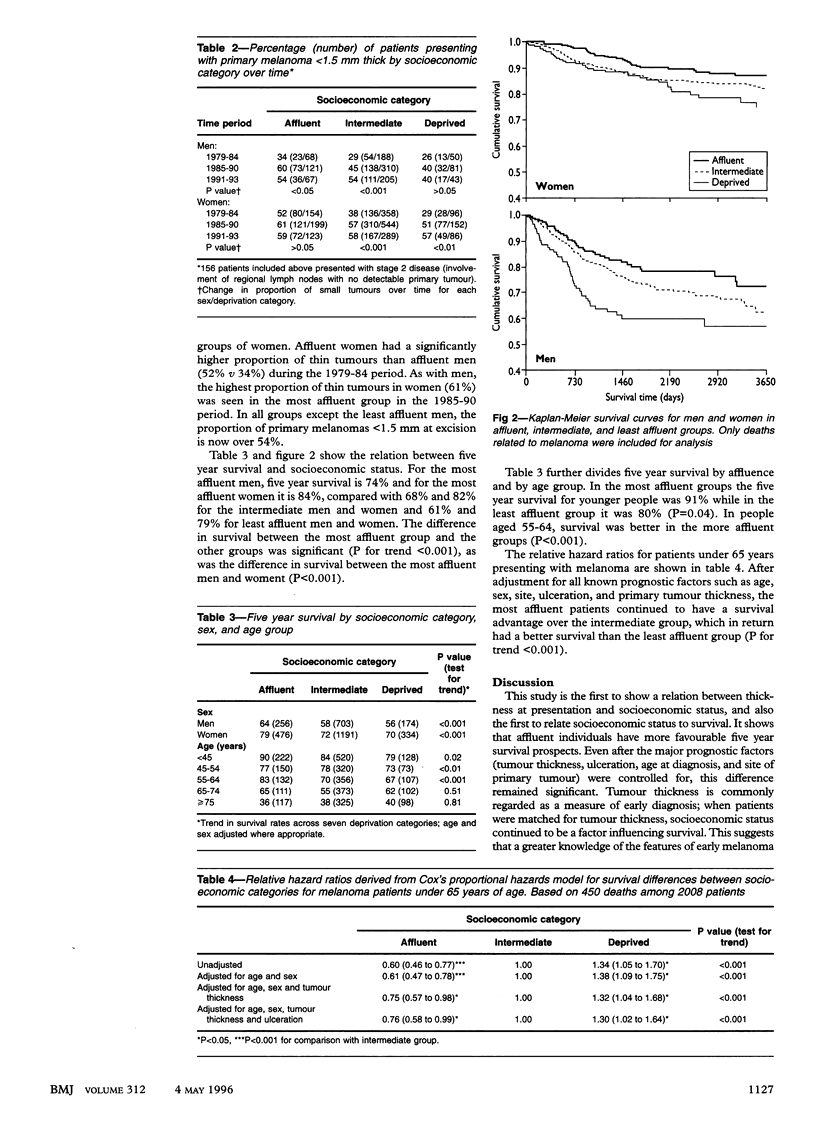Abstract
OBJECTIVE--To study incidence of and survival from cutaneous malignant melanoma in relation to socioeconomic status. DESIGN--Application of Carstairs deprivation score to all malignant melanoma patients diagnosed in a geographically defined area over a 15 year period. SETTING--West of Scotland (area population 2,716,900). SUBJECTS--3142 patients first diagnosed with malignant melanoma in the period 1979-93. INTERVENTIONS--Surgical excision of primary malignant melanoma with additional treatment as appropriate and follow up until December 1994. MAIN OUTCOME MEASURES--Malignant melanoma incidence, primary tumour thickness and five year survival by socioeconomic status. RESULTS--From 1979 to 1993, the age standardised incidence rate for cutaneous malignant melanoma was 9.1/100,000 for the most affluent men and 2.4/100,000 for the least affluent men and 16.1/100,000 and 5.0/100,000 respectively for most and least affluent women (P < 0.001 for trend in both). The incidence increased steadily over time in both sexes in all socioeconomic groups. Good prognosis tumours ( < 1.5 mm thick) were most common in the most affluent men and women, and over the study period the proportion of such tumours increased most in the intermediate affluence group (both sexes) and in the least affluent women. Five year disease free survival from melanoma for the sexes combined was 81% for most affluent, 77% for intermediate, and 73% for least affluent groups. Even after adjustment for known prognostic factors of tumour thickness, ulceration, age, and body site of primary melanoma, the more affluent the group, the better the survival. CONCLUSION--Although the incidence of cutaneous malignant melanoma is higher among more affluent people, the prognosis is better in this group than for less affluent individuals. Early diagnosis campaigns should be targeted particularly to less affluent men and primary prevention campaigns should emphasise the greater risk in more affluent women.
Full text
PDF



Selected References
These references are in PubMed. This may not be the complete list of references from this article.
- Carnon A. G., Ssemwogerere A., Lamont D. W., Hole D. J., Mallon E. A., George W. D., Gillis G. R. Relation between socioeconomic deprivation and pathological prognostic factors in women with breast cancer. BMJ. 1994 Oct 22;309(6961):1054–1057. doi: 10.1136/bmj.309.6961.1054. [DOI] [PMC free article] [PubMed] [Google Scholar]
- Lee J. A., Strickland D. Malignant melanoma: social status and outdoor work. Br J Cancer. 1980 May;41(5):757–763. doi: 10.1038/bjc.1980.138. [DOI] [PMC free article] [PubMed] [Google Scholar]
- MacKie R., Hunter J. A., Aitchison T. C., Hole D., Mclaren K., Rankin R., Blessing K., Evans A. T., Hutcheon A. W., Jones D. H. Cutaneous malignant melanoma, Scotland, 1979-89. The Scottish Melanoma Group. Lancet. 1992 Apr 18;339(8799):971–975. doi: 10.1016/0140-6736(92)91539-k. [DOI] [PubMed] [Google Scholar]


